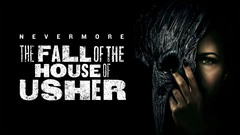8 Notable Edgar Allan Poe References in ‘The Fall of the House of Usher’
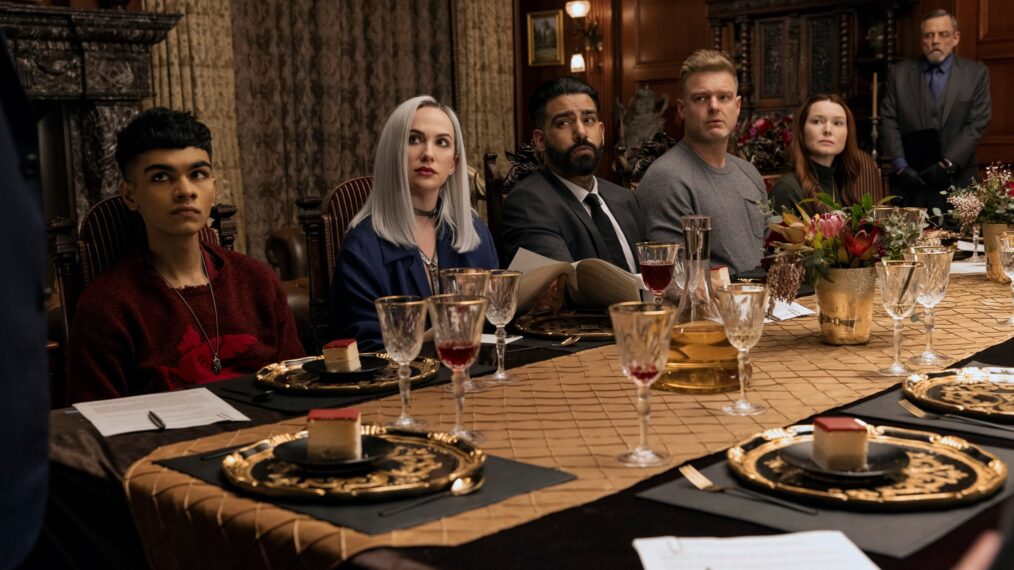
The Fall of the House of Usher is mesmerizing it its own right; it’s a powerful meditation on life, death, corruption, and the destructive power of familial bonds. But if you weren’t an English major (or don’t remember your Poe unit from high school English class), you might’ve missed just how intricate the show is—and how carefully it interweaves many of Poe’s familiar works. Here, we break down many of the major references to Edgar Allan Poe poems and short stories within the Netflix limited series’ eight episodes.

A Midnight Dreary
Much of “A Midnight Dreary” is devoted to setting up the conflict and characters, but one of the key events is derived from Poe’s works. In the show’s opening, Roderick (Bruce Greenwood) and Madeleine’s (Mary McDonnell) mother mysteriously returns from the dead, having clawed her way out of a grave—a premature burial, one might claim. In fact, that’s the short story this turn of events appears to be based off of, in which the narrator expresses an intense terror of being buried alive (and believes that he has been, only to find he’s actually on a ship).
Those with a working knowledge of Poe probably predicted poor Lenore (Kyleigh Curran) was doomed from the moment she appeared. Why? Poe’s poem “Lenore” laments the death of a kind, innocent woman named “the queenliest dead that ever died so young.”
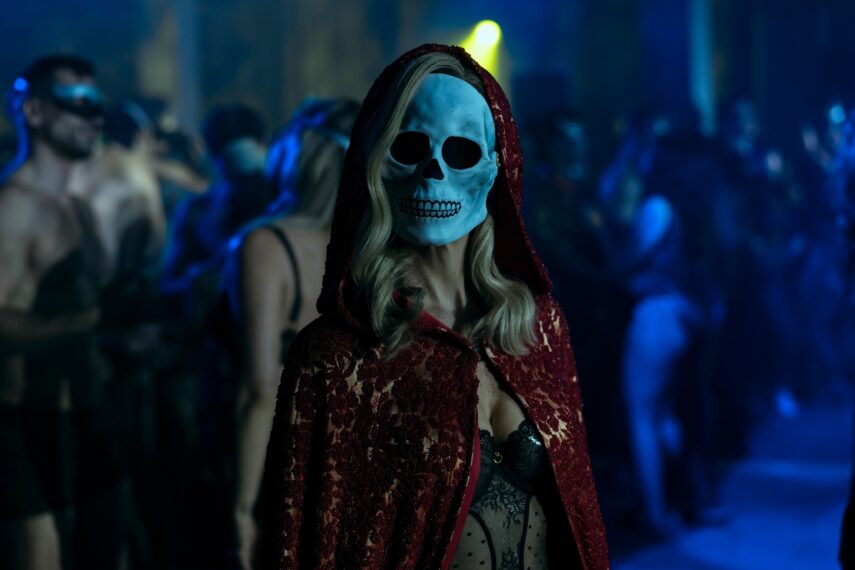
The Masque of the Red Death
Prospero’s (Sauriyan Sapkota) ill-fated orgy has its roots in Poe lore, with a few key details changed from the original work. In Poe’s short story, Prince Prospero, amid an outbreak of the Red Death in his kingdom, brings in his wealthy lords and ladies and then closes the gates to the rest of his suffering kingdom. He then throws a masquerade ball, which ends in calamity as a single guest—who eventually disappears—infects everyone with the titular disease.
Obviously, the gratuitous sex and nudity was a modern addition. Verna’s costume, too, was modified from the source material; in the original story, the infectious guest wore a horrific costume that emulated the sores and symptoms of the Red Death. On the other hand, Verna wears a skull mask and a red cloak.

Murder in the Rue Morgue
Unlike many of the stories on which the Netflix series is based, “The Murders in the Rue Morgue” is a detective story, not a horror story. In it, a detective named Auguste Dupin (the same name as Carl Lumbly’s character on the show) investigates the mysterious deaths of Madame L’Espanye and her daughter, Camille. In that story, it is eventually revealed that the deaths resulted from an orangutan attack with incredible strength. The parallels to Camille’s (Kate Siegel) death on the show are obvious.
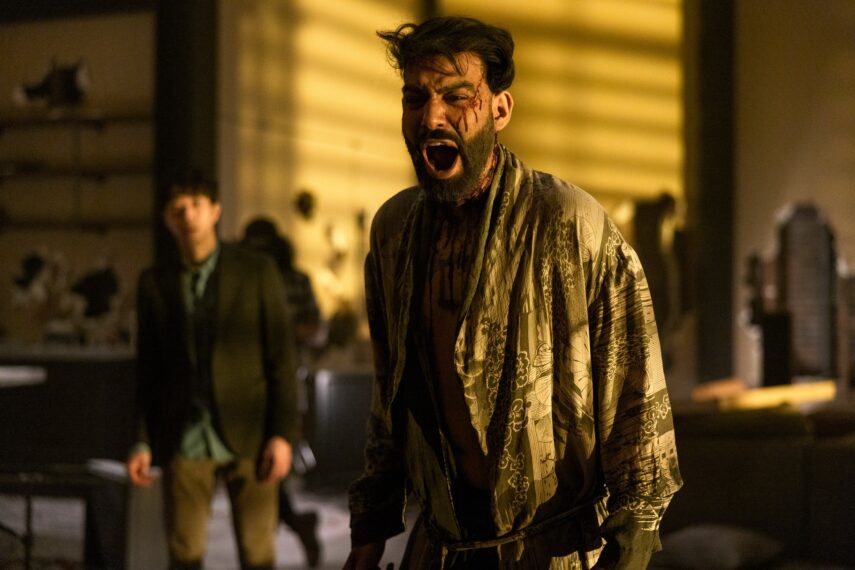
The Black Cat
Napoleon Usher (Rahul Kohli) met his end at the hands—claws?—of a particular black cat… and some strong hallucinogenic drugs. In “The Black Cat,” Poe’s narrator tells a gruesome tale of madness and death. When the narrator descends into insanity and begins harming every living creature around him, he kills and hangs the large black cat he and his wife had cared for from a tree; later, another black cat shows up with white markings on its neck that resemble a noose. That’s creepy, but it is, of course, not the extent of the creepiness. The narrator’s fixation on the cat eventually leads him to kill his wife and bury her in the wall, and when the police show up, they find her body—and the cat.
Napoleon didn’t actually kill anyone and stuff them in the walls, but it appeared that he did when he hallucinated Verna’s (Carla Gugino) animal shelter worker (with a missing eye, in another nod to the original story). The original cat’s gory death and the “replacement” cat also translated from Poe’s work, as Napoleon bought the new cat in hopes of keeping his boyfriend in the dark about the cat he’d killed.

The Tell-Tale Heart
Vic’s (T’Nia Miller) death arrives by her own hand, but not before a good dose of Poe madness. In the short story on which the episode is based, “The Tell-Tale Heart” in question refers to an insane narrator hearing the heartbeat of an innocent man he’s killed, dismembered, and stashed beneath the floorboards of his dwelling.
On the other hand, Vic’s story plays out a bit differently. She hears the mechanical beating of her newly developed synthetic heart throughout the episode, but viewers are led to believe her auditory hallucinations are stress-induced. It’s only in the final minutes of the episode that the truth is revealed: Vic accidentally killed her girlfriend, Alessandra, and, in a horrifically gruesome fashion, she cut open Al’s (Paola Nunez) corpse’s chest and placed the device on her heart in an attempt to bring her back to life. Yikes.
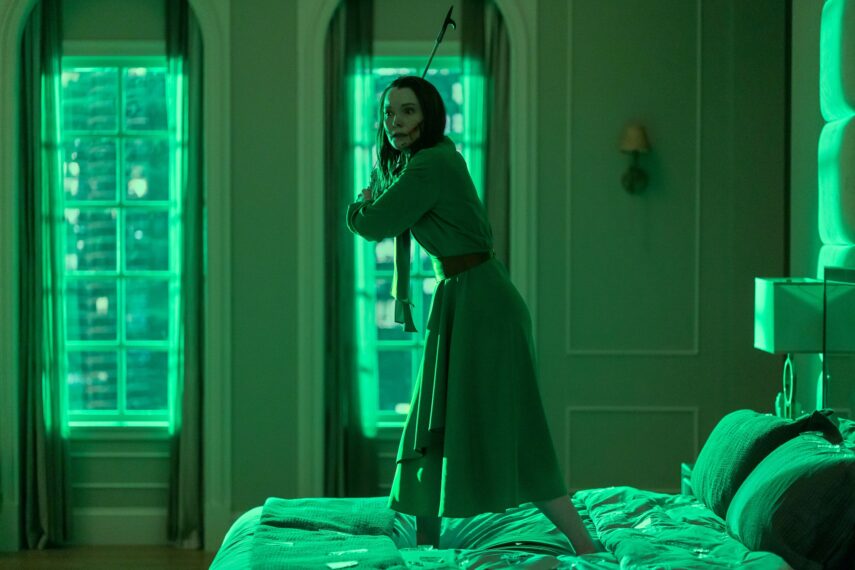
Goldbug
The title of Tamerlane’s (Samantha Sloyan) business venture, Goldbug, derives from a Poe short story called “The Gold-Bug,” which involved a businessman’s pursuit of a buried treasure based on his discovery of a golden beetle. Obviously, Tamerlane’s end arrives quite a bit differently.
Tamerlane’s story actually draws significant inspiration from “William Wilson,” which tells the story of an evil man who discovered an exact double of himself at boarding school and proceeds to antagonize and bully his double, playing cruel tricks on him. Eventually, William’s double vanishes, but many years later, he continues to be haunted by the other version of himself. He descends into drinking and disgrace, all the while haunted by his double until he attempts to kill the man with a sword—and a mirror reveals that instead of stabbing his double, he’s stabbed himself. Tamerlane’s repeated hallucinations of Verna dressed as her appear to have been sourced from this story, as does her death.
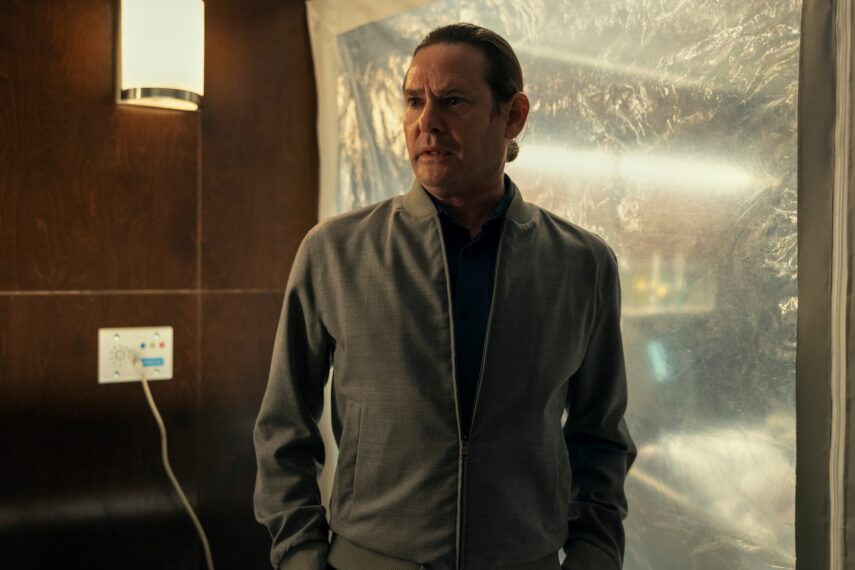
The Pit and The Pendulum
Frederick Usher’s (Henry Thomas) story ends more tragically than that of the main character in “The Pit and The Pendulum.” In the original, an unnamed main character undergoes a trial during which he is strapped to a wooden board, unable to move as a razor pendulum swings back and forth from the ceiling, lowering itself slowly to the ground—much as happened to Frederick in the series’ penultimate episode. Fortunately for the narrator, rats chew through the ropes, and although he falls into the pit mentioned in the title, he does eventually escape. Frederick, on the other hand, wasn’t so lucky.
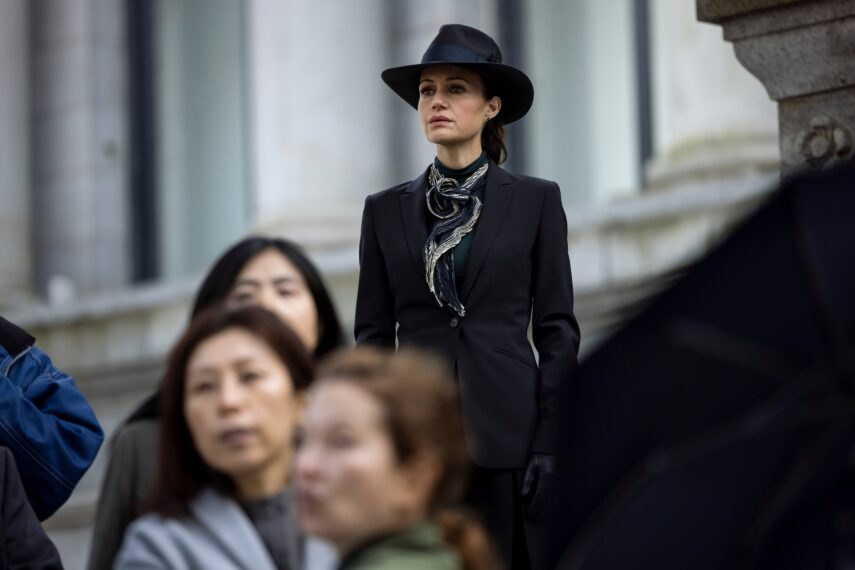
The Raven
Throughout the series, Roderick receives a long string of texts from his granddaughter—and rudely, he never responds. In the finale, we learn those messages didn’t actually come from her; they originated with a faulty artificial intelligence version of her, which spammed Roderick’s phone with a stream of a single word: “nevermore.” If you’re a Poe enthusiast—or perhaps even if you’re not—you know about that word’s significance. In the poem “The Raven,” the speaker is slowly driven to madness resulting from the death of his lover, Lenore, and a raven that taps at his door to repeat, over and over again, “nevermore.”
In “The Raven,” we also learn what happened to Rufus Griswold (Michael Trucco), who met a grisly fate as Madeleine and Roderick poisoned and trapped him behind a brick wall. This death also comes from Poe, specifically the short story “The Cask of Amontillado.” In it, a man named Montresor kills his acquaintance, Fortunato, in a similar fashion by chaining him up and sealing him behind a brick wall. In this story, Fortunato is dressed as a jester, and his final sound is the ringing bells of his costume—just like Rufus.
From TV Guide Magazine
How 'Countdown' Recruited Jensen Ackles to Go Full 'Die Hard'
Countdown boss Derek Haas talks creating the character around Ackles, and the cast teases the “Avengers”-like team of the crime thriller. Read the story now on TV Insider.



